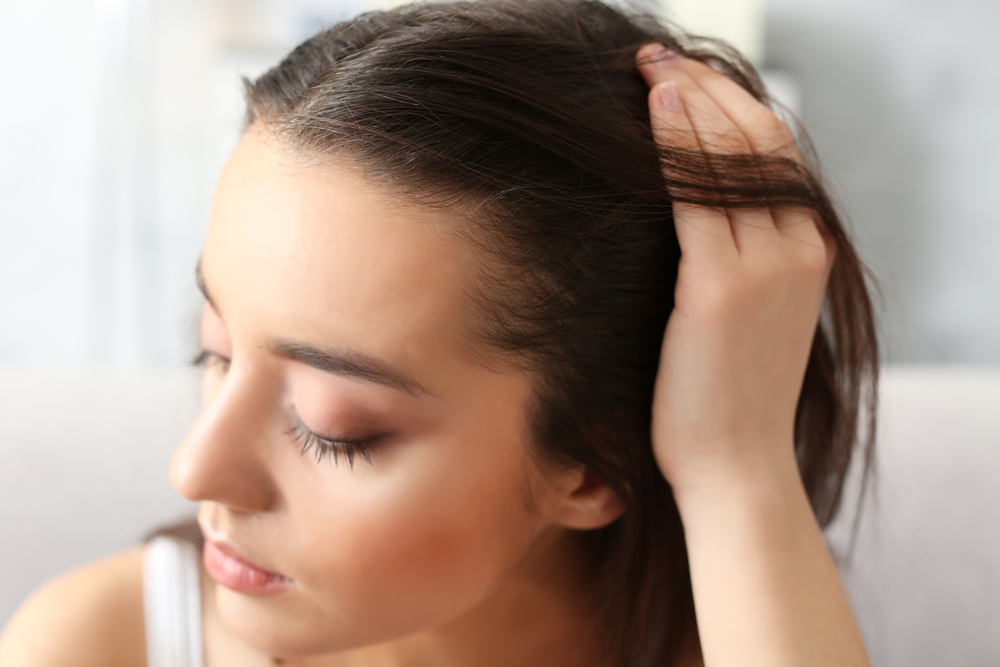
PRP hair restoration is an incredible treatment that produces noticeable results after just four to six weeks. However, until you reverse the underlying cause of your hair loss, you will continue to need follow-up treatments once or twice per year. While specific hair loss causes can’t be cured, PRP therapy can help promote localized hair growth and restore your once-luscious locks.
Common Causes of Hair Loss
It comes as a surprise to many that one of the most common causes of hair loss is medications and supplements. Certain drugs and dietary supplements, including blood thinners and high doses of vitamin A, can cause hair loss. Other medications that can cause hair loss include chemotherapy drugs and anabolic steroids prescribed for anemia. Side effects of such steroids go far beyond hair loss, so talk with your doctor if you have been prescribed these medications.
Taking a nutritional supplement that provides your recommended daily allowance of vitamin A may be too much for certain individuals. If you’re experiencing hair loss as a supplement side effect, look at switching your vitamin.
Thyroid Conditions
Another common cause of hair loss is hyperthyroidism and hypothyroidism. Several treatment options are available for both of these conditions, including anti-thyroid medications, thyroidectomy, beta-blockers, and radioactive iodine. To ensure your thyroid issues are being treated correctly, always consult with a trusted medical professional for guidance and advice.
Hormonal Imbalance
Struggling with a hormonal imbalance can lead to many health and beauty concerns. From excessive weight gain to adult acne, hormone levels can quickly affect your entire body – including your hair. Hormones play an essential role in regulating the hair growth cycle. An excess of male hormones in the female body can cause hair loss and shorten the hair growth cycle. If you believe a hormonal imbalance is to blame for your hair loss, talk with your doctor.
Stress
Sudden and unexplainable hair loss can often be blamed on stress. Stress levels raise the male hormone levels in your body. This can trigger scalp problems, such as dandruff, disrupt eating habits, and cause digestive issues. All of these side effects of stress can have a negative impact on your hair.
Vitamin Deficiency
A lack of vitamin B can leave you feeling exhausted with little-to-no energy. Not only does a vitamin deficiency affect your energy levels, but it can also take a toll on your hair. Vitamin B12 deficiency can affect the health of red blood cells, which carry oxygen to your tissues. This is a commonly experienced issue for vegans as vitamin B12 is primarily obtained through animal proteins.
Age
Age plays a factor in slowing hair growth, especially for those going through or about to enter into menopause. Hair loss becomes more prevalent, leading up to and after menopause and the hair that does grow becomes finer naturally. While part of the typical aging process, experiencing menopausal hair loss can be frustrating.
The Four Stages of Hair Growth
The four stages of the hair growth cycle are the anagen, catagen, telogen, and exogen stages, also known as phases.
Stage One: The first stage of the growth cycle is the anagen, or growing, phase and can last anywhere from two to seven years. The length of this phase determines how long your hair will grow.
Stage Two: The catagen, or transition, phase lasts for roughly 10 days and is characterized by shrinking hair follicles.
Stage Three: The telogen, or resting phase, is the third phase in the hair’s life cycle. Anywhere from 10 to 15% of your hairs are in this phase at any given time. After your old hair has completed its transition phase and it is in its resting phase, new hair starts to grow.
Stage Four: The fourth and final phase is the exogen, or new hair, phase. During this phase, 50 to 150 hairs usually fall out daily to be replaced by new hair.
PRP Therapy For Hair Growth
PRP hair restoration is an exceptional hair loss treatment that utilizes the growth factors found in your blood’s platelets. The ultra-concentrated growth factors essentially force your hair follicles to spend a more extended amount of time in the growth phase.
Platelet-rich plasma therapy is a straightforward three-step process.
Step One: It starts with safely drawing a bit of your blood.
Step Two: The blood is spun rapidly in a centrifuge.
Step Three: The PRP is injected into the regions of your scalp, experiencing significant hair thinning or loss.
To learn more about this revolutionary solution for hair loss and how PRP can restore your thinning hair, contact Hinsdale Vein & Laser today.